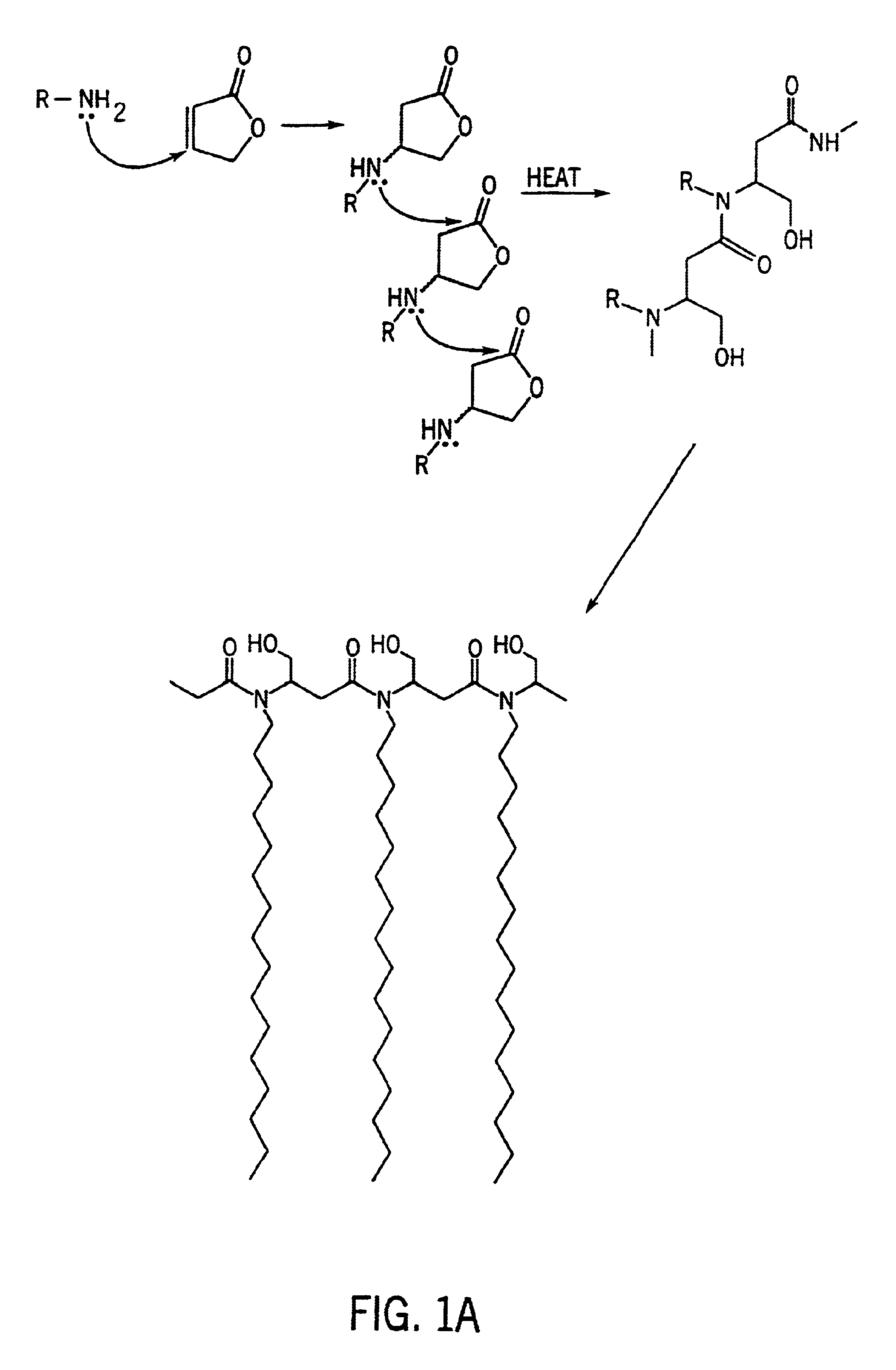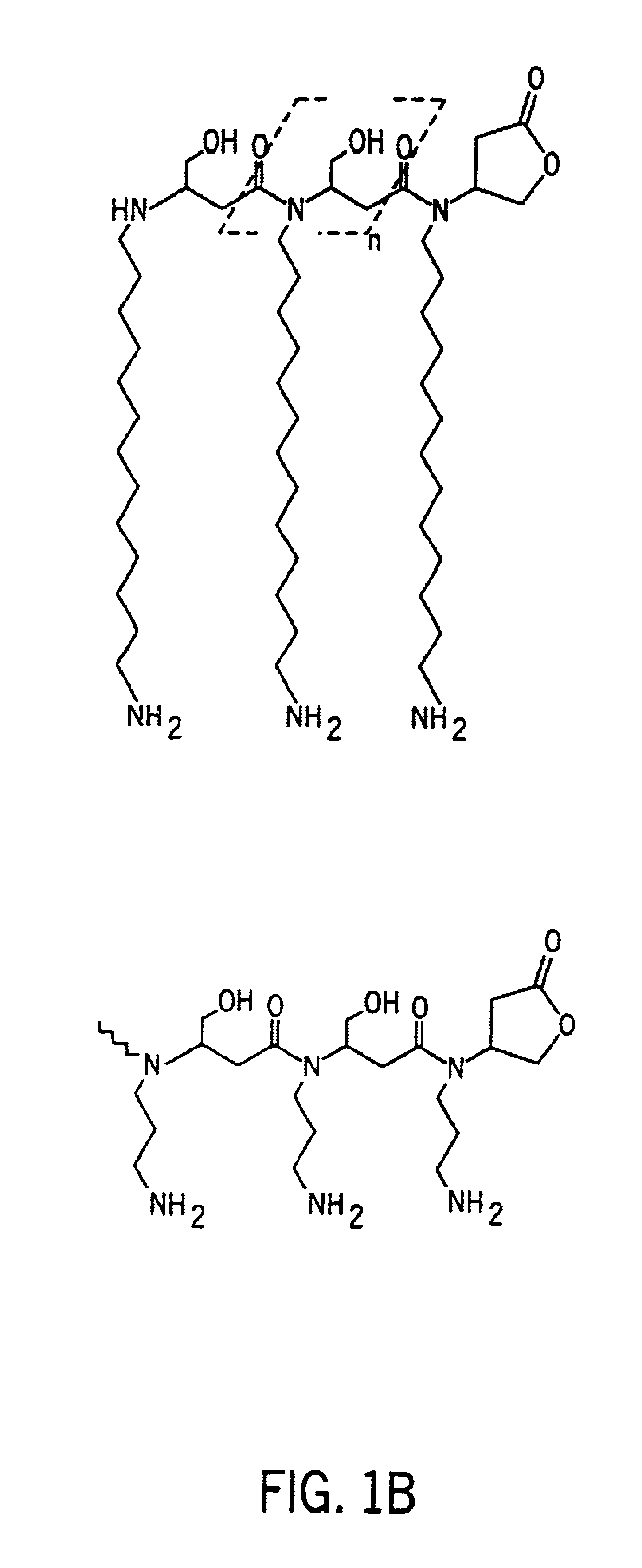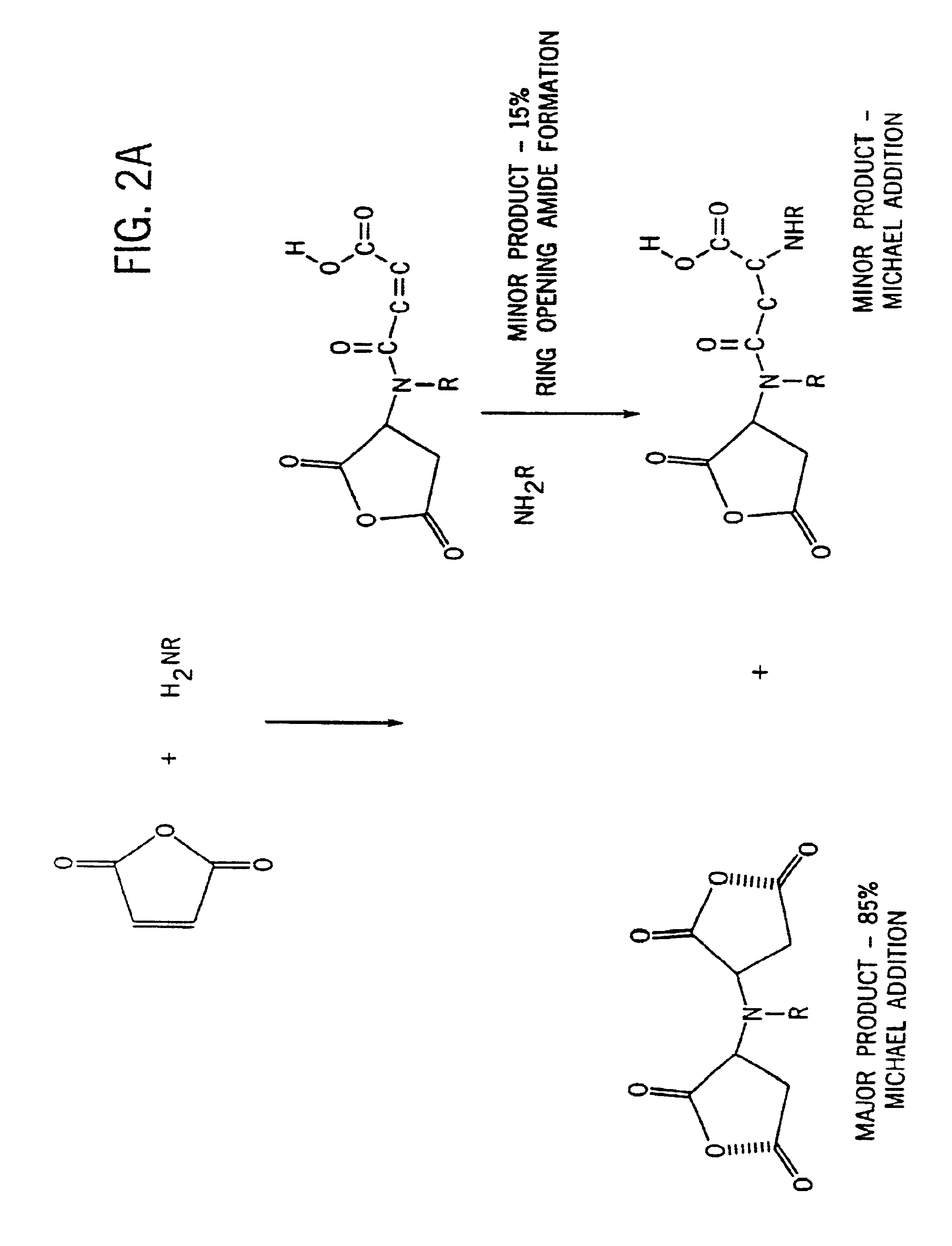Two dimensional polymer that generates nitric oxide
a two-dimensional polymer and nitric oxide technology, applied in the field of two-dimensional polymers, can solve the problems of thrombosis, affecting the effect of nitric oxide generation, and the major drawback of thrombosis in the preparation of polymeric materials, so as to achieve excellent antithrombosis, improve physical properties, and improve the effect of elasticity
- Summary
- Abstract
- Description
- Claims
- Application Information
AI Technical Summary
Benefits of technology
Problems solved by technology
Method used
Image
Examples
example 1a
Preparation of a Polyamide with Side Chains
[0053]A polymer with side chains was prepared as follows. First, 1.0 moles (144.1 grams) of maleic acid mono-ethyl ester was dissolved in 100 grams of isopropanol in a break away resin kettle. The kettle containing the maleic acid mono-ethyl ester / isopropanol solution was then cooled in an ice bath with agitation. Second, 0.5 moles (160.7 grams) of commercially available tetradecylamine was dissolved in 250 grams of isopropanol and added slowly to the cooled maleic acid mono-ethyl ester solution with stirring. A Michael-type addition reaction product began to precipitate within 5 minutes. The tetradecylamine addition required about two hours with ice bath conditions being maintained throughout. Third, 58.1 grams (0.25 moles) of commercially available pentaethylenehexamine were added drop wise to the reaction solution over a two hour period. The reaction is removed from the ice bath at the end of the monomer addition and stirred for an addit...
example 1b
Preparation of Another Polyamide with Side Chains
[0054]A polymer with side chains was prepared as follows. First, 1.0 moles (144.1 grams) of maleic acid mono-ethyl ester was dissolved in 100 grams of isopropanol in a break away resin kettle. The kettle containing the maleic acid mono-ethyl ester / isopropanol solution was then cooled in an ice bath with agitation. Second, 0.5 moles (160.7 grams) of commercially available tetradecylamine was dissolved in 250 grams of isopropanol and added slowly to the cooled maleic acid mono-ethyl ester solution with stirring. A Michael-type addition reaction product began to precipitate within 5 minutes. The tetradecylamine addition required about two hours with ice bath conditions being maintained throughout. Third, commercially available polyethylene imine (molecular weight≈600) were added drop wise to the reaction solution over a two hour period. The reaction is removed from the ice bath at the end of the monomer addition and stirred for an additi...
example 2
Preparation of a Substrate
[0055]Before application of a polymer coating to a substrate, the surface of the substrate was modified. Substrate surface modification was accomplished by adding 2 milliliters of 3-(2-(2-aminoethylamino)ethylamino)propyl-trimethoxysilane and 0.1 milliliters of glacial acetic acid to 50 milliliters of isopropanol. A polydimethylsiloxane substrate was then dip coated in this solution followed by a 125° C. cure cycle in a forced air oven for 15 minutes.
PUM
| Property | Measurement | Unit |
|---|---|---|
| crosslinked polymeric | aaaaa | aaaaa |
| polymeric | aaaaa | aaaaa |
| platelet aggregation | aaaaa | aaaaa |
Abstract
Description
Claims
Application Information
 Login to View More
Login to View More - R&D
- Intellectual Property
- Life Sciences
- Materials
- Tech Scout
- Unparalleled Data Quality
- Higher Quality Content
- 60% Fewer Hallucinations
Browse by: Latest US Patents, China's latest patents, Technical Efficacy Thesaurus, Application Domain, Technology Topic, Popular Technical Reports.
© 2025 PatSnap. All rights reserved.Legal|Privacy policy|Modern Slavery Act Transparency Statement|Sitemap|About US| Contact US: help@patsnap.com



